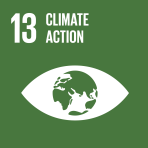State of Global Water Resources 2023

Abstract
The State of Global Water Resources report highlights severe stress on global water supplies, with five consecutive years of below-normal river flows and reservoir inflows. This shortage is affecting communities, agriculture, and ecosystems. In addition, glaciers experienced their largest mass loss in the last 50 years, with 2023 marking the second year of widespread ice loss globally. The report also highlights that 2023 was the hottest year on record, marked by prolonged droughts and widespread floods, driven by both the La Niña to El Niño transition and human-induced climate change. The report offers a global assessment of water resources, drawing on data from meteorological and hydrological services to inform decision-makers in water-sensitive sectors and disaster risk management. It complements the WMO's "State of the Global Climate" series. Now in its third year, this edition is the most comprehensive, including new data on lakes, reservoirs, soil moisture, and glaciers. It aims to build a global dataset of hydrological variables to support early warning systems for water-related hazards by 2027. With 3.6 billion people currently facing water shortages, projected to exceed 5 billion by 2050, the report underscores the urgent need for action to meet Sustainable Development Goal 6 on water and sanitation.



